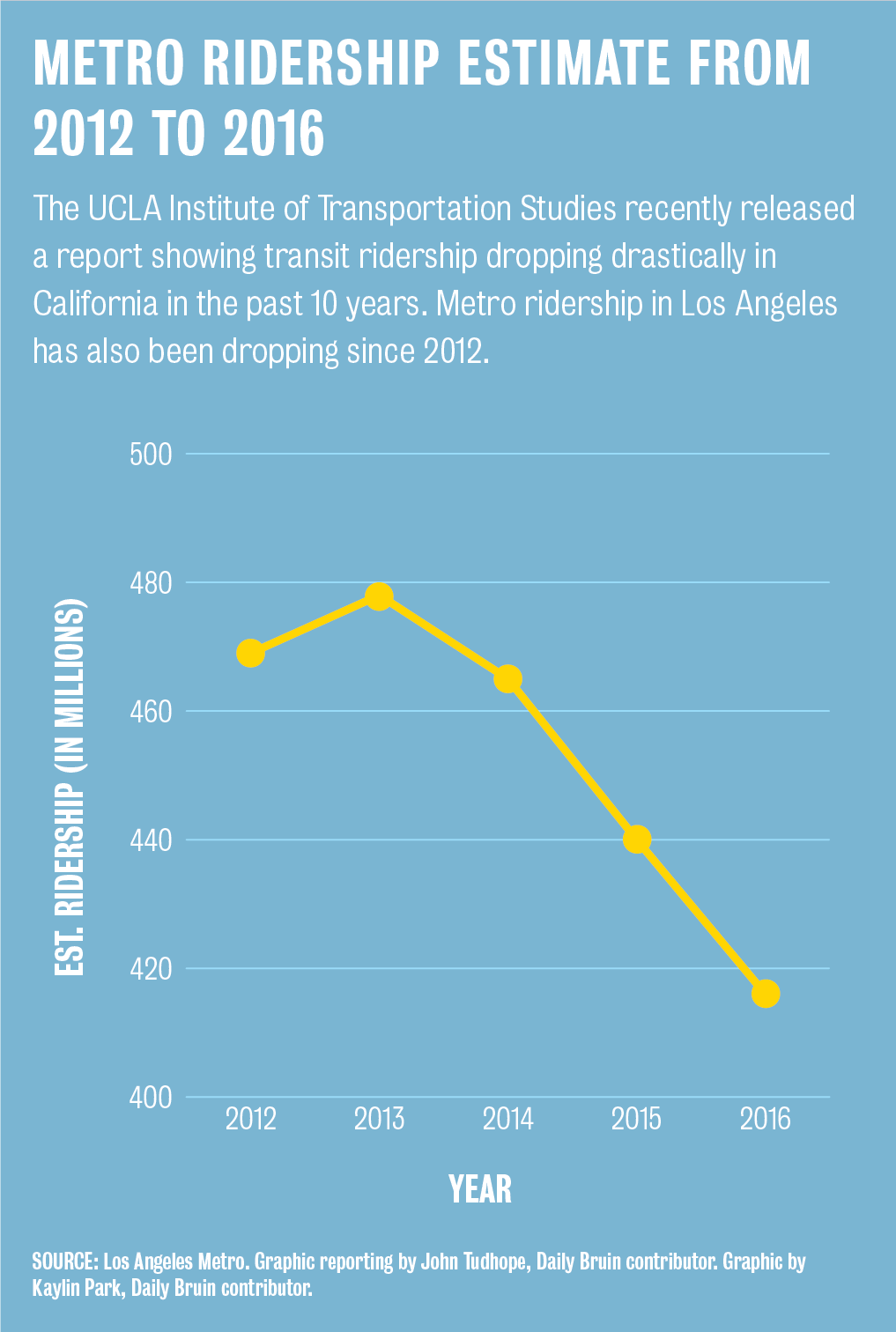Metro looks to increase ridership with Purple Line extension to Westwood

By John Tudhope
Feb. 14, 2018 10:40 p.m.
LA Metro is working to increase ridership following recent studies showing that the number of riders using public transportation has been falling for more than a decade.
The Institute of Transportation Studies at UCLA released a report Jan. 31 stating that ridership is decreasing as a result of rising vehicle ownership. Other factors, such as decreasing quality of public transportation, ride-sharing companies and changing neighborhoods play a role in this trend, according to the report.
Households across Southern California that do not own a vehicle dropped 30 percent from 2000 to 2015, while Metro lost about 2 million riders, about 4.8 percent, from 2009 to 2015.
Public transit riders are highly concentrated in low-income communities. However, as individuals in those communities have been gaining greater access to vehicles, transportation systems across the state have seen a decline, according to the report.
Michael Manville, an assistant professor of urban planning who co-authored the report, said favorable financing options, such as subprime vehicle loans and general interest loans, have made it easier for individuals to afford cars.
“It doesn’t seem like people’s incomes were growing over this time. It does seem like through various financing options … the effective price of buying a car went down,” he said.
Manville said it’s generally easy to be a vehicle owner in Los Angeles due to initiatives such as parking minimums and a focus on creating driving infrastructure, such as the city’s extensive freeway network. Parking minimums are city ordinances which require buildings to provide a certain amount of parking based on their size and capacity.
“What you get is a city where you pretty much have to drive,” he said.
The report recommended Metro attempt to attract new riders that would not have otherwise taken public transit, rather than attempting to recapture lost riders.
Metro is initiating infrastructure projects such as the Purple and Gold line extensions to promote ridership in areas that previously did not have direct access to metro lines, said Metro spokesperson Rick Jager.
Jager added the Purple Line Extension is part of Metro’s “Twenty-Eight By ‘28” initiative which hopes to see 28 infrastructure projects completed before the 2028 Summer Olympic Games in Los Angeles.
Manville said the Purple Line Extension, which is planned to have two stations in Westwood by 2026, could make it easier for individuals to access more affordable housing farther from campus.
“Right now there are neighborhoods in and around Downtown that are far more affordable than … the Westside neighborhoods,” Manville said. “I think the main thing that prevents faculty, staff and students from taking advantage of those lower housing costs is that right now the trade-off is some pretty terrible commute times.”
Some students said they think the expansion of the Purple Line will help increase ridership in Westwood.
Robert Young, a third-year American literature and culture student who takes the Metro bus to class, said he is excited about the prospect of having a subway near campus. Young, who is an Air Force veteran, added he thinks the subway extension will help him get to the Veterans Affairs hospital for medical checkups.
Elizabeth Ng, a third-year mathematics student, said she is excited about the subway extension because she thinks it will help connect Westwood to the rest of the city.
“I think the subway expansion is great,” she said. “Being in Westwood you feel so separated, and going to and from Downtown is such a hassle.”

